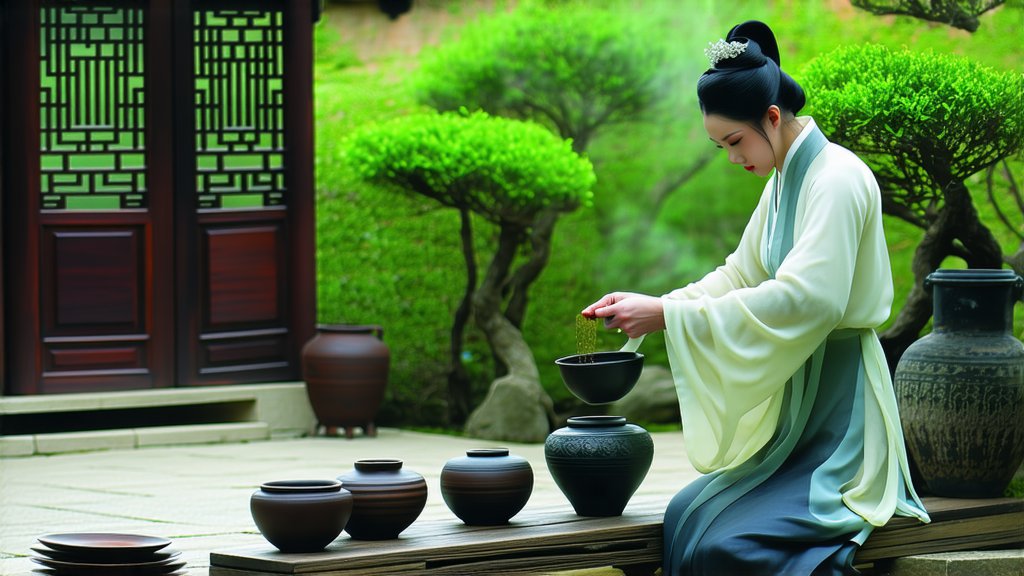
Fujian White Tea: A Journey into Bai Mu Dan
In the verdant landscapes of China's Fujian province lies a treasure trove of tea culture that has been meticulously preserved over centuries. Among the myriad varieties of tea originating from this region, Bai Mu Dan, also known as "White Peony," stands out as an exquisite representation of the artistry and tradition embedded in Chinese tea culture. This article embarks on a comprehensive exploration of Bai Mu Dan, shedding light on its historical roots, unique characteristics, intricate production process, and the nuanced art of its appreciation.
Historical Context
The history of Bai Mu Dan is deeply intertwined with the broader narrative of Chinese tea cultivation, which dates back over two millennia. The earliest records of tea consumption in China can be traced to the Shennong era (2737 BCE), where tea was initially used for medicinal purposes. It wasn't until the Tang Dynasty (618-907 CE) that tea began to gain popularity as a beverage, marking the dawn of tea culture in China.
Bai Mu Dan, specifically, emerged during the early Qing Dynasty (1644-1912). Its name, translating to "White Peony," reflects not only the delicate appearance of the tea but also its association with purity and elegance. Over time, Bai Mu Dan has become synonymous with the highest quality white teas, embodying the essence of simplicity and natural beauty.
Varieties and Classification
White teas, including Bai Mu Dan, are derived from the Camellia sinensis plant, a species native to Asia. Within the realm of white teas, Bai Mu Dan holds a special place due to its distinctive processing methods and flavor profile. Unlike other tea categories that emphasize oxidation levels, white teas are minimally processed, allowing them to retain their natural properties and subtle flavors.
Bai Mu Dan is categorized based on the maturity of the leaves and buds used in its production. The finest grades consist predominantly of young buds and unopened leaves, while lower grades may include more mature leaves. This classification system ensures a hierarchy of quality, with the most tender and youngest parts yielding the most prized Bai Mu Dan.
The Art of Production
The production of Bai Mu Dan is a testament to the skill and precision required to create such a refined tea. The process begins with the careful handpicking of the tea leaves and buds during the early spring months when they are at their freshest and most nutrient-rich. Only the top two leaves and a bud are selected, ensuring the highest quality.
Once harvested, the leaves undergo a series of meticulous steps:
-
Withering: The freshly picked leaves are spread out in a well-ventilated area or under the sun to allow them to wilt naturally. This process reduces moisture content and initiates mild oxidation.
-
Drying: After withering, the leaves are gently dried using low heat or further air drying. This step is crucial in preserving the tea's natural flavors and aromas.
-
Sorting and Grading: The dried leaves are then sorted based on size, shape, and quality. Premium Bai Mu Dan consists primarily of downy buds and young leaves, while lower grades may include more stems and older leaves.
The entire process is carried out with great care to minimize damage to the delicate leaf structure and preserve the inherent qualities of the tea. As a result, Bai Mu Dan retains its characteristic light color, floral aroma, and smooth taste.
Appreciating Bai Mu Dan
The true essence of Bai Mu Dan lies in its ability to evoke a sense of tranquility and refinement through its consumption. To fully appreciate this tea, one must engage in a mindful and deliberate tasting ritual. Here are some guidelines for an authentic Bai Mu Dan experience:
-
Preparation: Use water heated to approximately 80-85°C (175-185°F). Boiling water can scald the delicate leaves, leading to a bitter taste.
-
Tea Ware: Opt for transparent glassware or white porcelain to admire the elegant unfurling of the leaves and buds during steeping. A Gaiwan or Yixing teapot is also suitable for multiple infusions.
-
Leaf to Water Ratio: Typically, a ratio of 3-5 grams of Bai Mu Dan per 200ml of water is recommended. Adjust according to personal preference for stronger or lighter brews.
-
Steeping Time: For the first infusion, steep for about 1-2 minutes. Subsequent infusions can be extended gradually, as Bai Mu Dan can withstand multiple steepings without losing flavor.
-
Observation: Take note of the tea's aroma, clarity of the liquor, and the visual appeal of the leaves as they dance in the water. Bai Mu Dan should exhibit a pale yellow color with a subtle floral fragrance.
-
Tasting: Sip slowly, allowing the tea to coat your palate. Notice the initial sweetness followed by a gentle, lasting aftertaste. Bai Mu Dan is known for its smooth, mellow flavor profile with hints of honey and floral notes.
Conclusion
Bai Mu Dan represents more than just a tea; it embodies a philosophy of life that values simplicity, harmony, and the beauty of nature. From its historical significance to its meticulous production process and the art of its appreciation, every aspect of Bai Mu Dan speaks to the depth and richness of Chinese tea culture. For those seeking a moment of peace and reflection, Bai Mu Dan offers a perfect companion, inviting you to slow down and savor the present moment.